From tree to drink
Cacao is a gift from nature. The transformation from fruit into a drink is quite special. This knowledge is passed on for many generations of people who honored cacao as a sacred drink and enjoyed its benefits. Below we explain the steps of this process.
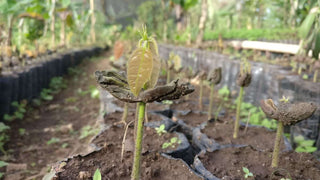
Seedling sprouting
Cacao beans are seeds of the Theobroma Cacao tree, originating from the Amazon. When a fresh cacao bean sprouts a seedling grows out of it. Special quality seeds can be selected by hand to plant for new cacao trees. Often they are raised in a nursery and later planted on the farm. It loves partly shade and sun. So forests are a great place to grow cacao.
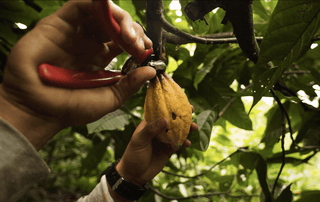
Harvesting cacao pods
Cacao pods are the fruits of the cacao tree. They are quite large and grow on the trunk of the tree and bigger branches. They are filled with cacao beans and white fruity pulp. It takes about 6 months for a cacao fruit to ripen and it takes an experienced eye to know which are ready to harvest. They grow in various shapes and colours.
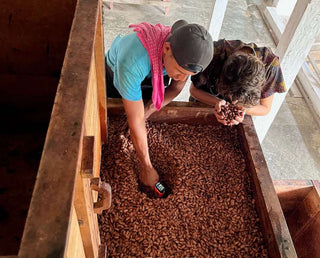
Fermentation
After the harvest the cacao fruits are opened and the cacao beans are gathered together with the white fruity pulp. The pulp contains juice and sugars important for the fermentation process. Together they are fermented in wooden boxes for about 7 days depending on the cacao and climate. This is a delicate process that needs to be checked daily to make sure it's not under or over fermented. This is a first important transformation for the cacao beans that makes all the difference for its taste.
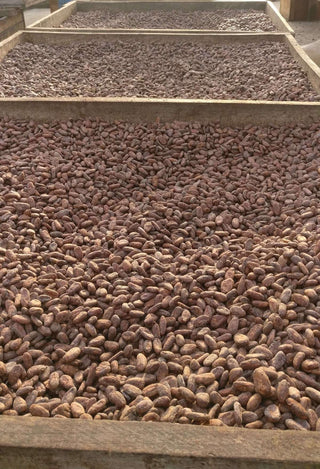
Drying
When the fermentation is completed the cacao beans are laid out to dry. Either directly in the sun or protected from the rain. Cacao grows in hot and humid areas and drying it well is important to prevent molds from ruining the harvest. The dried beans can be stored for a long time until ready to process.
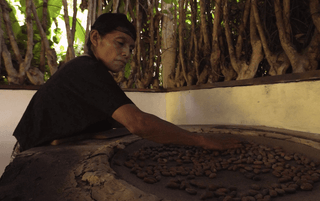
Roasting and Peeling
The dried cacao beans are roasted and peeled to remove the husks. This is an important step to clean the cacao and for the delicious chocolate taste to develop. Research shows that roasting the cacao increases certain compounds and is better preserved. Sadly a lot of cacao is over-roasted which diminishes beneficial effects. Traditionally cacao is fire-roasted on a clay comal, which takes experience to do well. This is also possible in ovens or adapted coffee roasters.
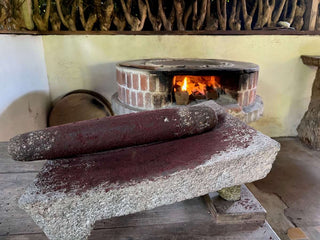
Grinding into a paste
The final step to process your cacao is to grind the peeled beans into a fine paste. Traditionally a metate is used, a mealing stone to grind the cacao by hand. Hard work! This is still done today for smaller and test batches at the finca in Guatemala for example. Our cacao is ground with stone rollers that makes it lighter work. Also in this step we want the cacao to be minimally processed and thus not ground for too long. The pure cacao is already so delicious.
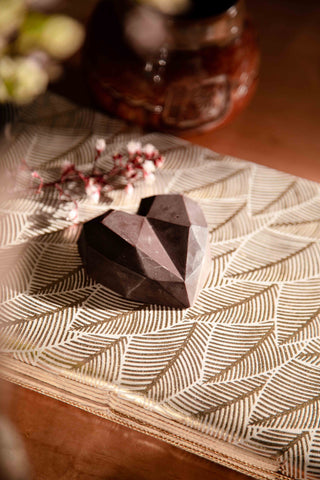
Cacao paste in any form
If the cacao is not ground into a paste, you cannot dissolve it into a drink. The liquid cacao paste looks like molten chocolate and can be shaped in any form. We offer it in blocks and in easy to use flakes. This is essentially the same cacao, but in a different form. In our Kakaw Hearts we add essential oils and adaptogenic mushrooms as something extra special.
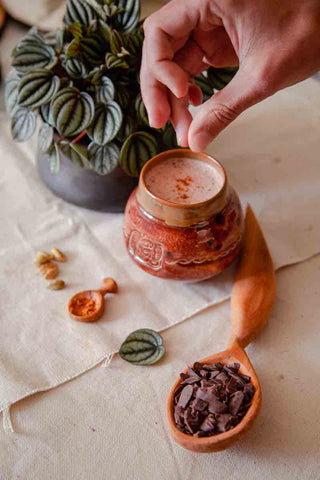
Preparing your cacao drink
And there we are. All ready for you to make a delicious cacao drink. For a special moment, a ceremony, to share with friends or extra focus and energy. The pure cacao paste is easily mixed into a drink. It needs to be warm enough to melt well. Pure with water or with plant-based milks and optional spices. The trick to a perfect serve is to foam the cacao well.
